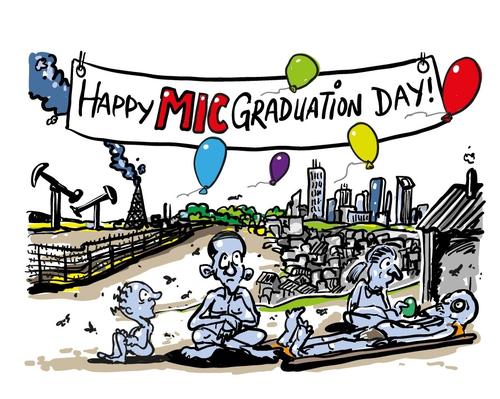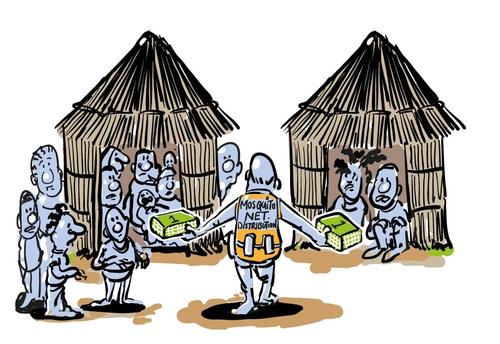Policies underlying international development aid by traditional donors, including the funding for health, are predominantly driven by the classification of countries according to their gross national income (GNI) per capita.
Despite wide recognition that these arbitrary, statistical thresholds tagging countries as low or middle-income (LIC, MIC) are no longer fit for purpose, they have been in use by the World Bank and traditional donors as a proxy for development over the past 40 years.
Such a myopic approach fails to grasp the diversity of the health needs of a population within countries and across borders. It also disregards their epidemiological profiles and actual ability of countries to translate financial revenues into health expenditures and results, increasingly running the risk of negatively impacting or worse, reversing health gains achieved over the past decade and a half.
Health as a pre-condition for human and economic development was at the core of the Millennium Development Goals (MDGs) adopted in 2000. It galvanised the world around common goals, concrete health results, and a surge of global health solidarity with an unprecedented boost to development assistance to health (DAH), which increased in real terms from US$6 billion in 1990 to US$31.3 billion in 2013. The creation of the key global health initiatives such as the Global Fund to fight Aids, Tuberculosis and Malaria (GFATM) or Gavi, the Vaccination Alliance, were also part of that endeavour.
However this paradigm is shifting. The aftermath of the financial crisis in 2008 combined with the vast majority of donors systematically failing to abide by their commitment to allocate part (0,7%) of their gross national product to official development assistance (ODA) has led to the erosion of global health solidarity. Furthermore, the increased number of countries moving up the income ladder (primarily the countries ‘graduating’ to the level of Middle Income Country or MIC) has led to the inaccurate assumption that these countries can swiftly and automatically shoulder responsibility for their population’s needs, including health.
This assumption is central to discussions on-going around aid, including the Financing for Development (FfD) conference associated with the post-2015 agenda which is taking place in Addis Ababa this month, and the Sustainable Development Goals (SDGs) set to be endorsed end of September 2015 at the United Nations summit in New York.
Yet, the reality of the populations living in countries labelled as middle-income is rather bleak. MICs host today over 70% of the world’s extreme poor. They face a triple burden of disease with the highest burden globally in three of the main killer infectious diseases (HIV/Aids, tuberculosis and malaria), non-communicable diseases such as diabetes or cancer, while also facing global health threats. MSF has programmes in over 60 countries, of which over 50% are MICs.

As of July 1st 2015, MICs referred to a group of 105 countries such as Myanmar, Mauritania, Kenya, Bangladesh, Sudan, Côte d’Ivoire, Syria, Eygpt, Ukraine and South Africa. These countries are as diverse in size, population, disease burden and income, as they are in culture and geographies.
However traditional and multilateral donors appear to ignore the glaring diversities between and within countries in terms of actual human development, and growing global inequities. The illogic of grouping countries such as China and the Republic of Congo in one group is not lost on most people but it does not appear to impact policy.
Worse still, as countries that ‘graduate’ to the MIC level are assumed to be no longer in need of official development assistance, stricter funding restrictions apply, most importantly with loans replacing grants. Loans are traditionally used in profit making sectors and therefore health loses out. Additionally, tighter trade and intellectual property regulations also apply, which de facto limits access to cheaper drugs, vaccines and medical devices.
The present rhetoric around improving domestic revenues and insistence on the governments’ responsibility for their population health has merit, but only if it is in addition to, rather than replacing global health solidarity. In addition, pressuring countries to rely too swiftly on their domestic funding carries the risk of reluctance or inability to expand or continue existing health programmes, innovate, provide care free of charge, or ensure health care access for vulnerable, marginalised people or non-nationals.
MIC countries in some cases are already less able to procure lifesaving vaccines or newer drugs than low income countries. Climbing rates of multi-drug resistant tuberculosis currently occur in countries which, while in the middle income bracket, cannot yet cope with the financial cost that these diseases impose. An increasing negativity towards disease-specific programmes is also more notable, with a tendency to using a competition logic (non-communicable versus communicable diseases, HIV versus diabetes) rather than using health needs as the basis of the discussion.

The growing policy shift and consequences for eligibility, funding levels and funding channels make it also difficult for Gavi or the GFATM to continue fulfilling their strategic and impactful role in global health and disease control. Reduction of funding towards civil society, despite its key role in both preventive and curative care in many countries around the world, can be witnessed by MSF teams in the field as is the case in South Africa in regards to HIV/Aids.
The re-introduction of impoverishment mechanisms and barriers to health such as user fees and out of pocket payments by populations has already been reported by MSF teams as governments seek ways to increase national health expenditure. A reduction, stagnation and/or more worryingly a diversion of health grants towards other development goals is also a real risk, with health currently one of 17 proposed SDGs.
Tragically, instead of reviewing the current aid allocation logic based on national income classification and truly assessing health needs in countries, additional labels such as LDCs (Least Developed Countries) and FCS (Fragile and Conflict-affected states) are used, adding unclear exceptions, using the same fundamentally faulty approach, and rendering everything more complex.
Under these circumstances, meeting international health targets and bring diseases under control will become increasingly difficult, potentially translating into more health gaps that organisations such as MSF, a medical humanitarian organisation, are increasingly solicited to fill.



